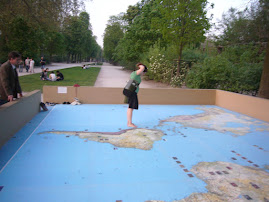Across the EU economy, women continue to earn an average of 15% less than men, according to the European Commission. A new report released today sets out ways the EU can bridge the gap – which has barely changed over the past decade. The gender pay gap represents the difference between average hourly pay for women and men before tax across the economy as a whole. It reflects ongoing discrimination and inequality in the labour market which, in practice, mainly affects women.
"Girls out-perform boys at school and more women enter the labour market with a university degree than men, but a pay gap of 15% persists. This is an absurd situation and needs to change," said Vladimír Špidla, EU Commissioner for Employment, Social Affairs and Equal Opportunities. "The pay gap is a complex issue with multiple causes. Sometimes we see pure discrimination. But often reasons are hidden: women do more unpaid work, like taking care of the household and dependants; more women work part time and often the women-dominated sectors are on a lower pay scale. We must shift up a gear now. The only way to succeed is by getting men and women, NGOs, social partners and governments on board to tackle the problem at all levels".
The gender pay gap extends well beyond the question of equal pay for equal work. One of the main causes is the way women's competences are valued compared to men's. Jobs requiring similar qualifications or experience tend to be paid less when they are dominated by women than by men. For example, in some countries nannies earn less than car mechanics, supermarket cashiers less than warehouse workers, nurses less than the police.
The pay gap also reflects inequalities on the labour market mainly affecting women - in particular the difficulties in reconciling work with private life. Women have greater recourse to part-time work and more frequent career breaks, which negatively impact on their professional development. They still lag behind when it comes to holding managerial positions and they encounter more obstacles and resistance as they proceed along their career paths. As a consequence, women's career paths are more often interrupted, slower and shorter, and hence less well paid than men's. Statistics show that the pay gap grows with age, education and years of service – differences in pay are over 30% in the 50-59 age group and 7% for the under-30s; it is over 30% for those with third-level education and 13% among those with lower level secondary education and for workers with over 30 years of service in a company it is as high as 32%, while it is 10% lower (22%) for those who have worked in a company for one to five years.
To tackle the issue, today's Communication identifies four fields of action:
Ensuring better application of existing legislation (analysing how current laws could be adapted and raising awareness);
Fighting the pay gap as an integral part of Member States' employment policies (exploiting full potential of EU funding, in particular the European Social Fund);
Promoting equal pay among employers, especially through social responsibility;
Supporting exchange of good practices across the EU and involving the social partners.
Closing the gender gap is one of the key concerns highlighted in the 'Roadmap for equality between women and men 2006-2010'. In addition, a Eurobarometer survey from January 2007 showed that a large majority of Europeans believe that more women are needed in management positions (77%) and as Members of Parliament (72%). 68% of Europeans believe family responsibilities act as an obstacle for women in accessing management positions and 47% consider women are less likely to be promoted than men with the same qualifications. Today's Communication aims to analyse the causes of the pay gap and identify courses of action at EU level. It highlights that the pay gap can only be tackled by acting at all levels, involving all stakeholders and focusing on all the factors that cause it.
For more information:
Link to communicationhttp://ec.europa.eu/employment_social/news/2007/jul/genderpaygap_en.pdf
Gender equality policy
http://ec.europa.eu/employment_social/gender_equality
Study on 'The gender pay gap: origins and policy responses'
http://ec.europa.eu/employment_social/publications/2006/ke7606200_en.pdf
European Year of Equal Opportunities for All
http://equality2007.europa.eu
Fourth European Working conditions survey:
http://www.eurofound.europa.eu/ewco/surveys/EWCS2005/index.htm
Inscription à :
Publier les commentaires (Atom)









.jpg)



Aucun commentaire:
Enregistrer un commentaire